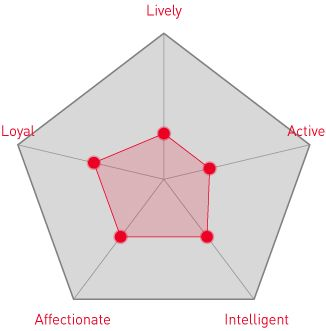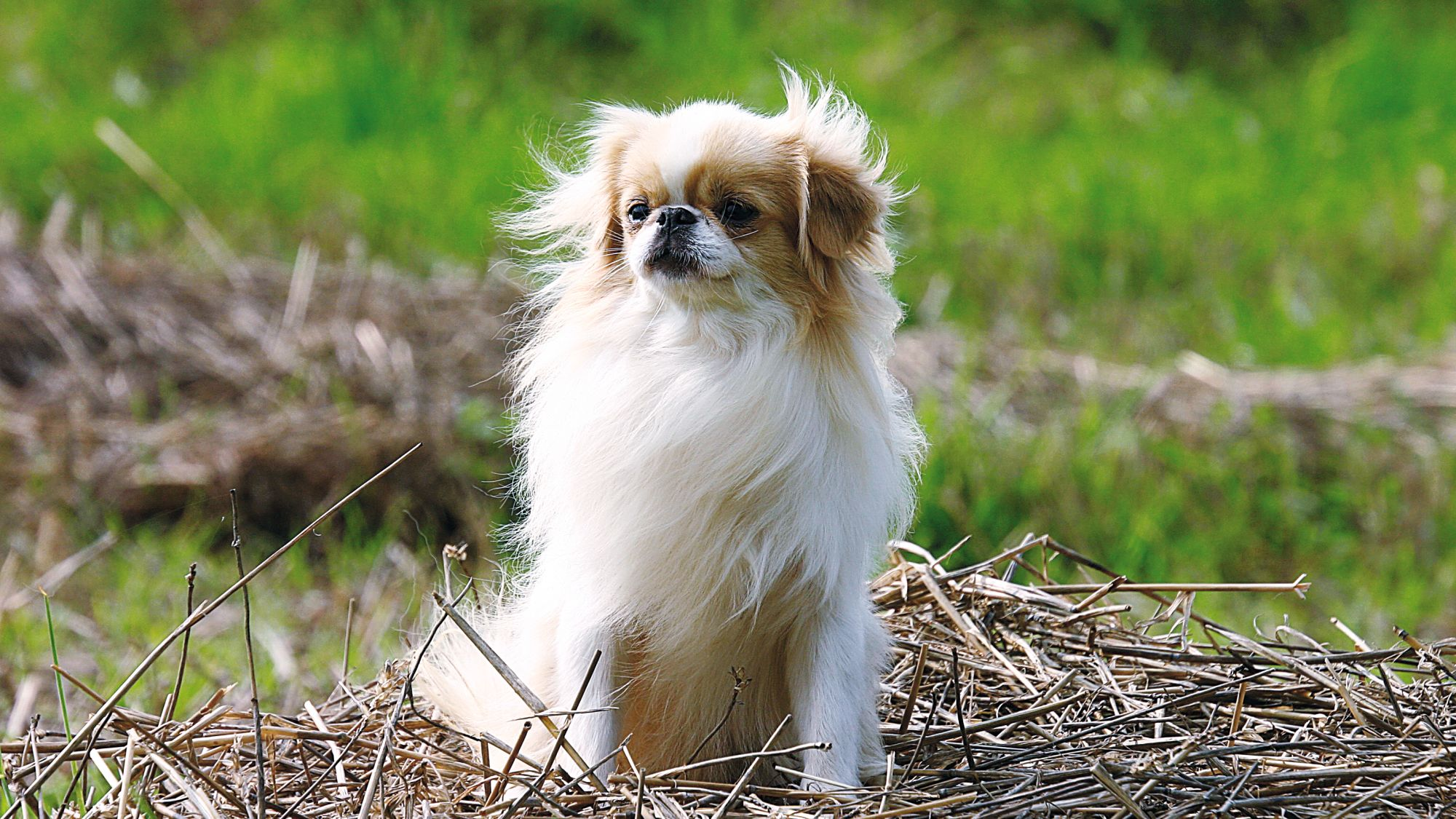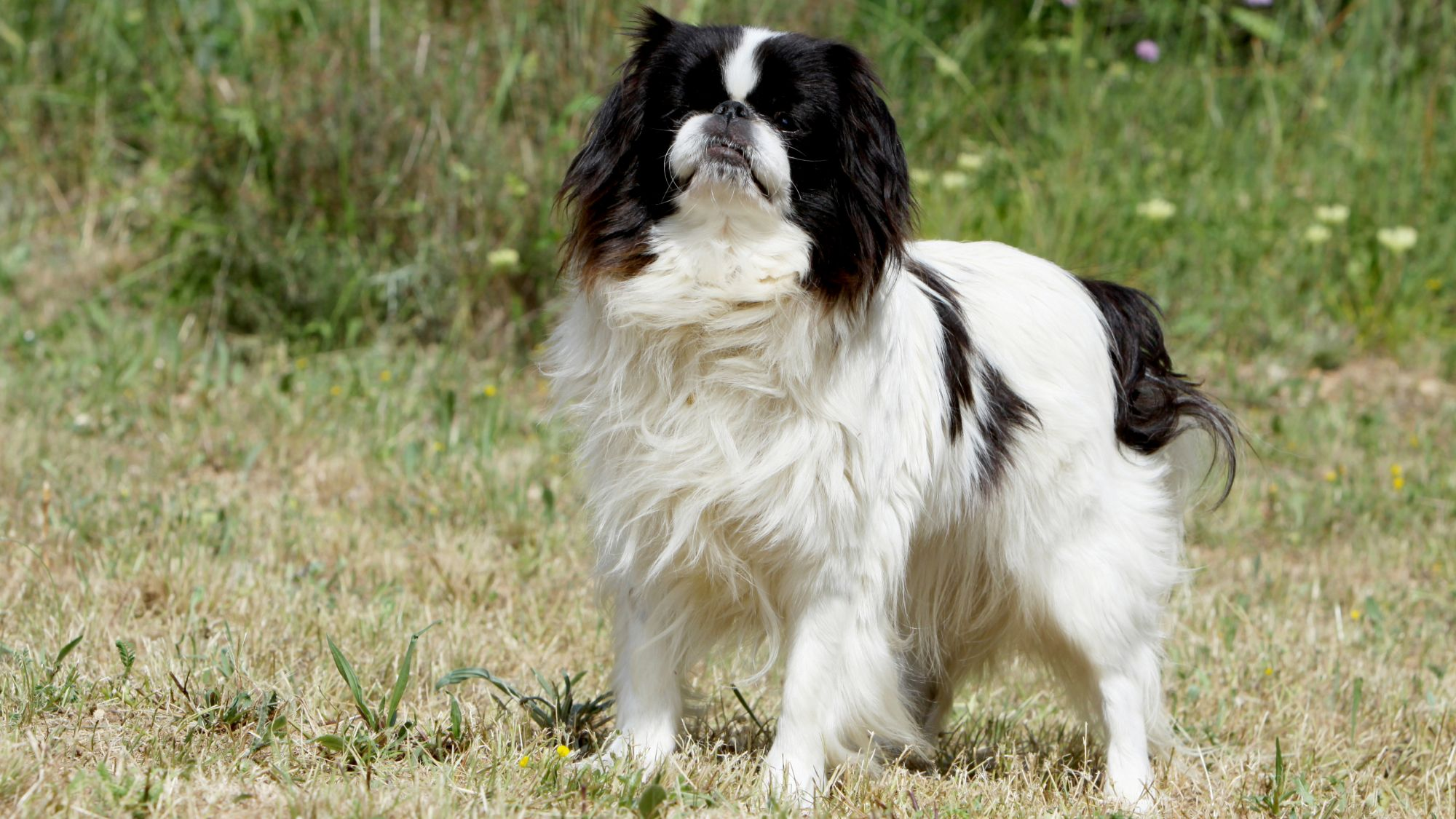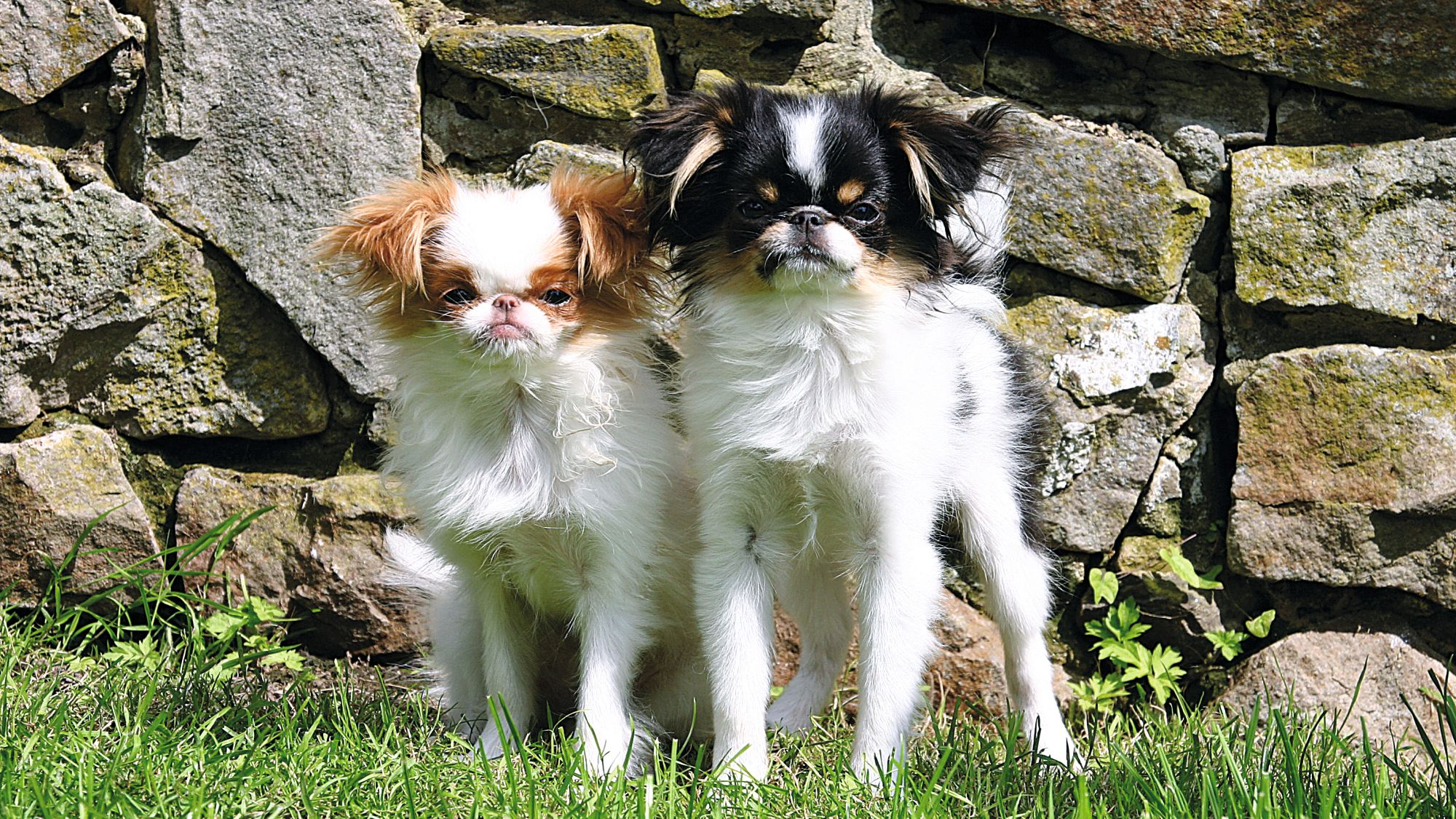
Let's talk Japanese Chins
For the would-be pet owner struggling to decide between a dog and a cat, the Japanese Chin breed, often described as feline in nature, may well be the perfect compromise. Tiny, beautiful dogs with long, luxuriant hair and a noble bearing – as befits the ancient companion of Japanese aristocracy – Japanese Chins make calm and affectionate pets that get on fine living in an apartment. Their exercise needs are modest, but they do need daily walks: cat-like they may be but a cat flap won’t cut it.Official name: Japanese Chin
Other names: Japanese Spaniel
Origins: Japan

| Drooling tendencies |
|
Warm weather? |  |
| Shedding level | Suited to apartment living? | ||
| Energy Level (high, low, medium)* | Low | Family Pet?* |
|
| Compatibility with other pets | Can stay alone?* |
* We advise against leaving pets alone for long stretches. Companionship can prevent emotional distress and destructive behaviour. Speak to your veterinarian for recommendations.
Every pet is different, even within a breed; this snapshot of this breed specifics should be taken as an indication.
For a happy healthy and well-behaved pet, we recommend educating and socializing your pet as well as covering their basic welfare needs (and their social and behavioral needs).
Pets should never be left unsupervised with a child.
Contact your breeder or veterinarian for further advice.
All domestic pets are sociable and prefer company. However, they can be taught to cope with solitude from an early age. Seek the advice of your veterinarian or trainer to help you do this.


| Baby age | Birth to 2 months |
| Puppy age | 2 to 10 months |
| Adult age | 10 months to 8 years |
| Mature age | 8 to 12 years |
| Senior age | from 12 years |

1/7
Get to know the Japanese Chin
All you need to know about the breed
Small but perfectly formed just about sums up the Japanese Chin, a toy breed whose origins as a companion dog date back many centuries. Often weighing in at under three kilos (6.5 lb), and with a naturally aloof bearing, a penchant for batting at toys, grooming their fur and jumping to high places, it’s easy to see why the Japanese Chin breed is often described as cat-like.
When it comes to looks, however, this companion to the ancient Japanese nobility is entirely distinctive, and not feline at all: the long, abundant and silky coat, including a shaggy mane and plumed tail, comes in shades of white, black and red. A snub nose and jauntily folded ears give the Japanese Chin a permanent look of surprise, if not astonishment.
Japanese Chins are affectionate with their humans – they are not fond of being left alone for too long. They get on well with children once trained (although because they’re so delicate they shouldn’t be left alone with young ones in case of accidental clumsiness that could hurt them.)
Japanese Chins are bright and affectionate little dogs that don’t need a huge amount of exercise. They’re usually content to survey the goings on from a comfortable spot in their domain. Those centuries of life in royal courts have left their mark on the regal and dignified Japanese Chin: they make perfect little pets as long as you don’t mind that they probably consider you to be their subjects.

2/7
2 facts about Japanese Chins
1. Jumping and spinning
As befits a breed that is often described as cat-like, Japanese Chins are known for their high jumping ability. Like their feline counterparts, they enjoy being up high, surveying the household. Setting aside a lofty perch for your new cat, sorry dog, may be a good idea. Just remember, they aren’t actually cats so it needs to be at a height they can safely jump down from! Some owners also report a phenomenon known as the “chin spin”: when they get excited, they spin around in circles.
2. Regal through-and-through
A background among the nobility of China and Japan apparently gave the Japanese Chin a taste for aristocracy: the breed also became a companion to the British royal family. Queen Alexandra, the daughter-in-law of that famous dog-lover Queen Victoria, was initially given a Japanese Chin and then went on to collect several more, often photographed or painted with her pets, thus giving the breed the further distinction of appearing in London’s National Portrait Gallery.
History of the breed
With origins as ancient as the Japanese Chin’s, it’s probably to be expected that the exact story is not clear. Some historians of the breed believe they originated in China, others in Korea.
Different sources have the dogs being introduced to Japan, where the breed got its name, by Buddhist monks, Chinese emperors or European merchants, anywhere between 500 and 1,000 years ago. The Japanese Chin may have been derived from the Pekingese breed. One thing is certain, we have Japanese nobility to thank for developing the Japanese Chin into the dainty and charming little dog we know today. It is said that they were bred to be small enough to be carried in the sleeve of a kimono.
The Japanese Chin only became known outside Japan in the 1850s when the country opened up to trade after two centuries of isolation. The first two Japanese Chins to travel to the US were given to an American trade envoy. The breed was recognised by the American Kennel Club (AKC) in 1888, just 4 years after the AKC was formed.

4/7
From head to tail
Physical characteristics of Japanese Chins
1. Ears
Flöt en ekki þung eyru hanga niður beggja vegna höfuðsins
2. Feldur
Stuttur, þéttur feldur yfir vatnsheldum undirfeldi
3. Fur
Feldurinn getur verið svartur, súkkulaðibrúnn eða gulur, allt frá rjómagulum upp í rauðleitan
4. Skott
Langt skottið er ofarlega og er stöðugt á iði, stundum iðar jafnvel allur líkaminn.
5. Leggir og hryggjarsúla
Hlurfallslega vel vaxinn og gott jafnvægi á milli leggja og hryggjarsúlu.

5/7
Things to look out for
From specific breed traits to a general health overview, here are some interesting facts about your Japanese Chin

6/7
Caring for your Japanese Chin
Grooming, training and exercise tips
Grooming that gorgeous long silky coat certainly won’t be a chore for Japanese Chin owners – and in any case, it’s pretty straightforward: a weekly brush and a bath every month or so should do the trick. Their nails grow fast, so they need regular trimming and their ears should be checked regularly for wax and debris that could cause ear infections.
While Japanese Chins need daily exercise to stay healthy, with those little legs we’re not exactly talking marathons – regular walks should do it, and they get on fine living in an apartment. Any off-the-lead runs should be in an enclosed space as once outside they have a tendency to follow their noses. They benefit from socialisation early on - this will help them overcome a natural wariness of other dogs and people they don’t know. As befits a small dog with a regal bearing, not to mention one that is often described as “cat-like”, successful training will mean convincing your Japanese Chin that anything you want them to do is entirely their idea. Patience, positivity, fun and snacks should be on the menu (taken out of their daily food allowance of course!)
7/7
All about Japanese Chins
Japanese Chins are still fairly rare, despite being known outside their Asian home region for nearly two centuries. But with a charming personality in a tiny and beautiful package, they really do deserve wider acclaim.
The Japanese Chin breed is not known for excessive barking, although because they are naturally wary of strangers, they might get a bit vocal when people they don’t know approach their home: perfect pint-sized watchdogs.
Read more on this topic


How to adopt a dog

Things to consider before getting a dog
Sources
1 - Veterinary Centers of America https://vcahospitals.com/
2 - Royal Canin Dog Encyclopaedia. Ed 2010 and 2020
3 - Banfield Pet Hospital https://www.banfield.com/
4 - Royal Canin BHN Product Book
5 - American Kennel Club https://www.akc.org/
